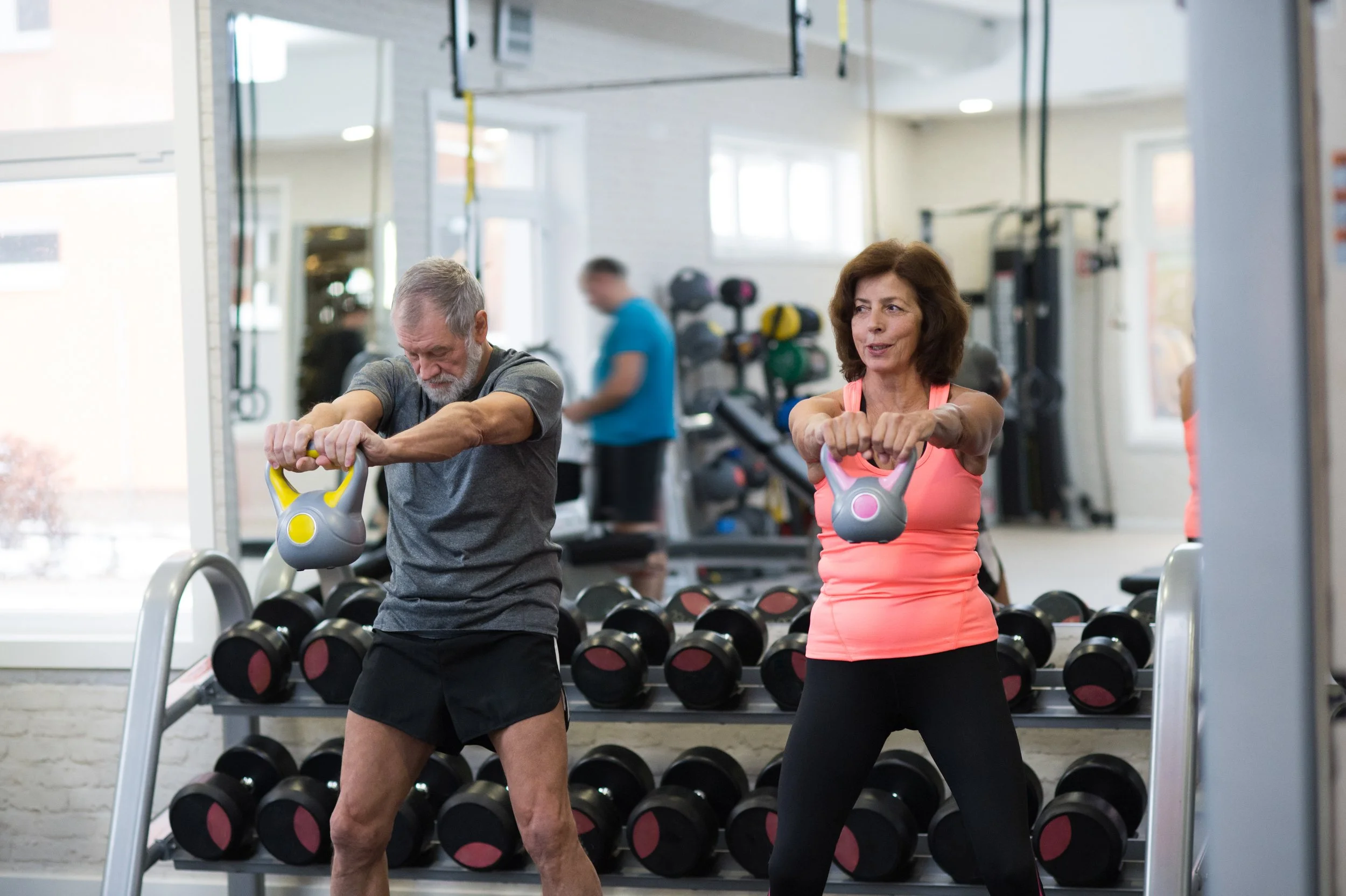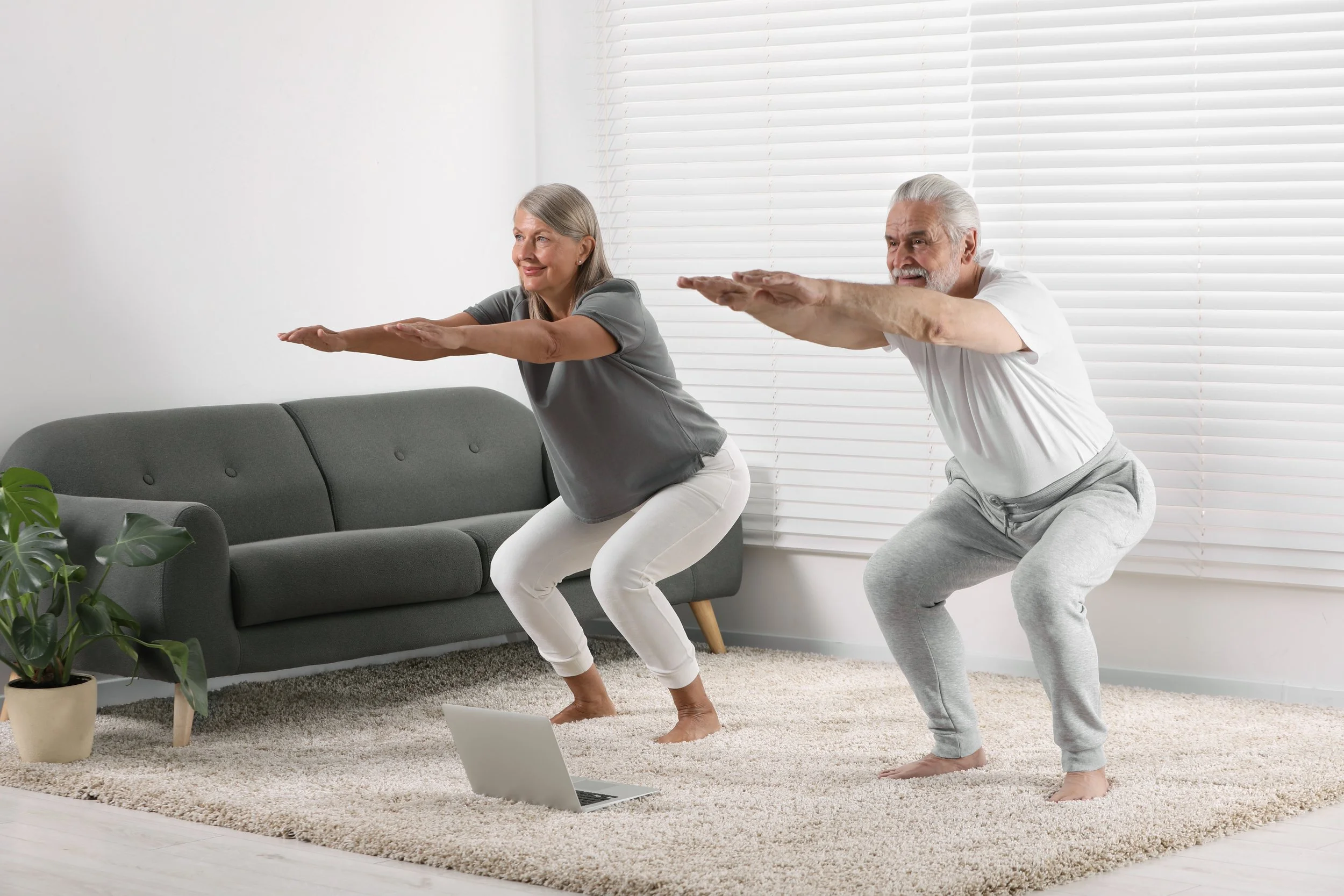For Bone and Joint Health
Movement & Mobility
Did you know?
Women and men benefit from different types of movement. See page 3 for gender-specific guidelines!
Movement and Mobility Matter
Most people are familiar with the benefits of exercise such as losing weight, building muscle, and reducing the risk of heart disease. But many people do not know that physical activity also helps build strong bones and healthy joints. Inactivity, bedrest, and immobility can lead to many health complications like bone loss and painful, stiff joints.
Staying active is the most important thing you can do to maintain mobility and independence no matter your age, gender, or health. Many simple activities can build stronger bones and strengthen the muscles and ligaments that support the joints. An exercise routine that balances joint mobility exercises, weight-bearing movement, flexibility, and balance will protect your health as you age.
Movement for Bone Health
Staying active is important for maintaining bone health. Movement helps to build strong bones when we are young and maintains bone strength as we age. Both osteoporosis (brittle bones) and its precursor, osteopenia, can be slowed or prevented by following a regular weight-bearing exercise program. The two types of movement that are most important for bone health are weight-bearing activity and strength/muscle-building activity.
Weight-bearing Activity
Contrary to common misconceptions, bone is a living tissue and it responds to increased stress – stress on a bone from weight-bearing exercise leads to improved (denser) bone structure and slows down the loss of calcium maintaining bone strength. Anything you can do on your feet that works your muscles and bones against gravity will help build stronger bones.
Examples of weight-bearing movements include: walking, hiking, jogging or running, dancing, racquet sports like tennis or pickle ball, tai chi, low-impact aerobics.
Strength and Muscle-Building Activity
The more you move, the better your bone strength and balance will be and the less likely you will be to fall or suffer a dangerous fracture.
Strengthening exercises can include:
Lifting weights
Working with resistance bands
Calisthenics (exercises that use your own body weight like push ups)
Movement for Joint Health
Whether you move with ease or have joint pain, movement is medicine for all joints. Movement:
Helps lubricate joint cartilage, which can reduce inflammation, stiffness, and pain.
Increases blood circulation to the joints, which helps to deliver oxygen and nutrients that help repair damage.
Helps you reach and maintain a healthy weight so that less pressure is placed on your joints. Remember, for every 10 lbs. of additional body weight, your hips and knees feel 50 to 60 lbs. of pressure.
Releases endorphins in the brain and often changes the perception of pain.
Movement also prepares your body for surgery if it is ever needed down the road. The best prepared patients have the best outcomes after surgery. People who move regularly before surgery have fewer complications and faster recovery than those who don’t exercise regularly.
The 3 types of exercise that are most effective in helping joints are stretching, strengthening, and cardiovascular/aerobic exercise.
Stretching:
Increases lubrication and enhances range of motion.
Light, gentle stretches before your daily movement will warm your muscles up.
Stretching after movement, while your muscles are still warm, will help maintain flexibility.
Strengthening:
Strengthening exercises build strong muscles, which act as shock absorbers for joints.
Lifting weights, using resistance bands, or using your own body weight for resistance are all good options.
Cardiovascular / Aerobic:
Gets your blood pumping, sends oxygen and nutrients to your joints, and is good for your whole body.
Try a brisk walk, climbing stairs, or low-impact aerobics.
Gender-Specific Differences in Mobility and Movement
The musculoskeletal systems of women and men are different. Men have higher levels of testosterone, and so they have more muscle mass than women. Women have weaker muscle strength in their quadriceps (thighs) and hip abductors (outer hips) - the muscle groups that help with walking, balance, and moving side to side. Women also have muscles that stretch more when moving, more weight in their mid- and lower-body, and wider hips.
The differences between male and female bodies should be taken into account when developing a safe exercise and mobility program. Developing an activity regimen that targets these gender-specific differences will:
Improve your strength and balance, and prevent falls.
Reduce pain associated with osteoarthritis and delay the need for joint surgery.
Make you better prepared for surgery if you choose to have it.
Additional Resources
The Wellness Center for Bone and Joint Health and the Bone and Joint Center at UPMC Magee-Womens Hospital have a library of helpful resources that will help you with movement and mobility. See below for downloadable exercises and videos to get started.
Female-Specific Exercises
For a unique exercise program designed specifically for women, visit:
Here you will find 9 movements you can do at home that target quadriceps (thigh) and hip abductor (outer hip) strength to improve walking and balance.
Hip and Knee Exercises for Anyone With Joint Pain
Improving mobility and preparing your body for surgery can safely be done at home. Movements designed by a licensed physical therapist can be found here:





